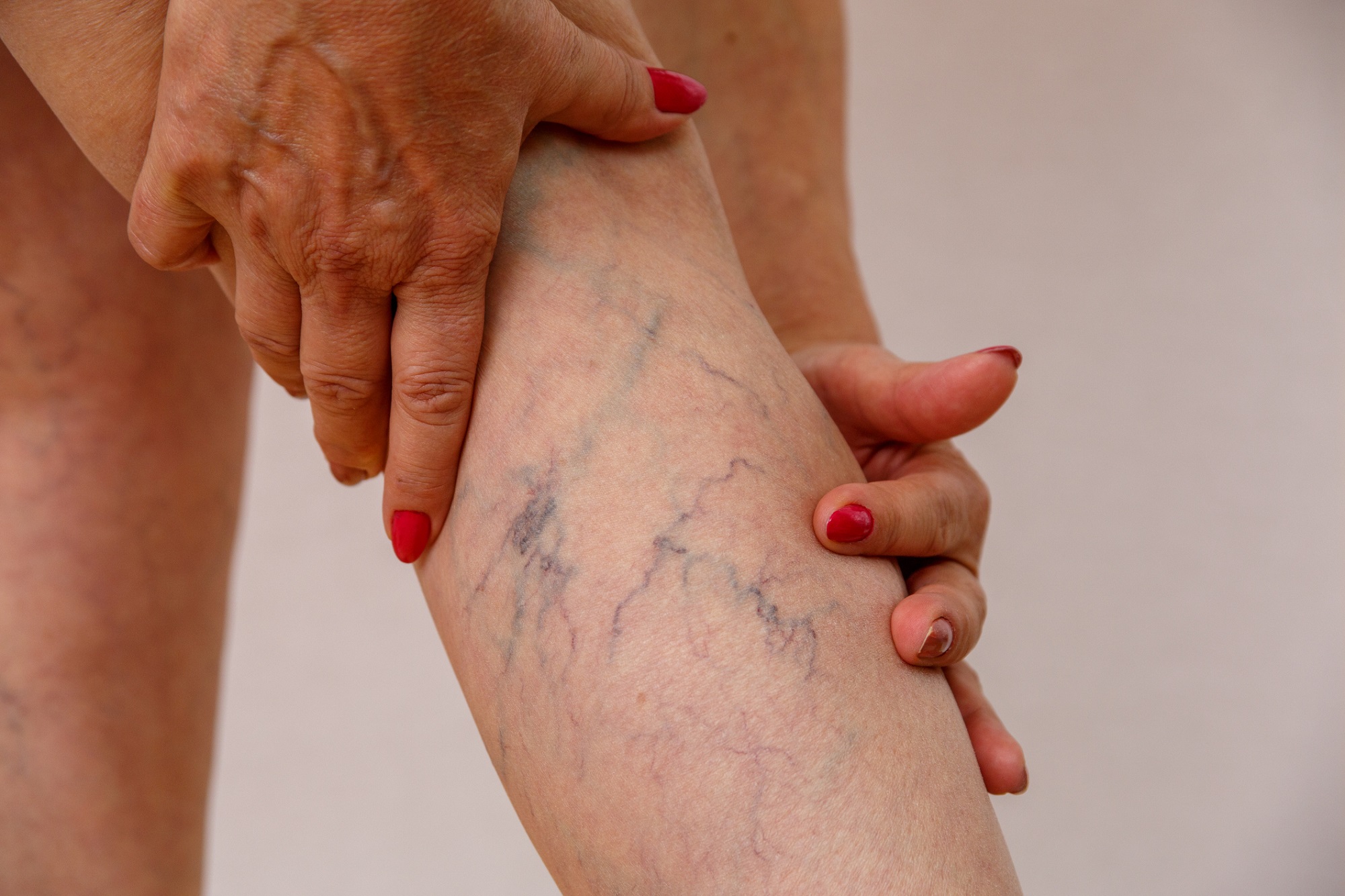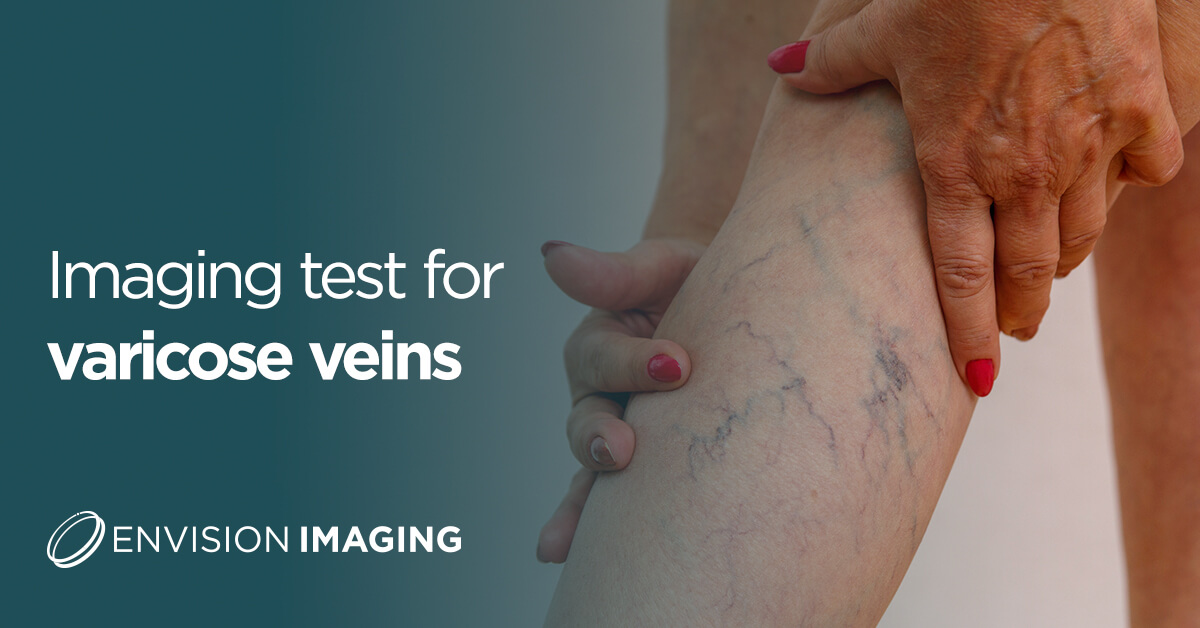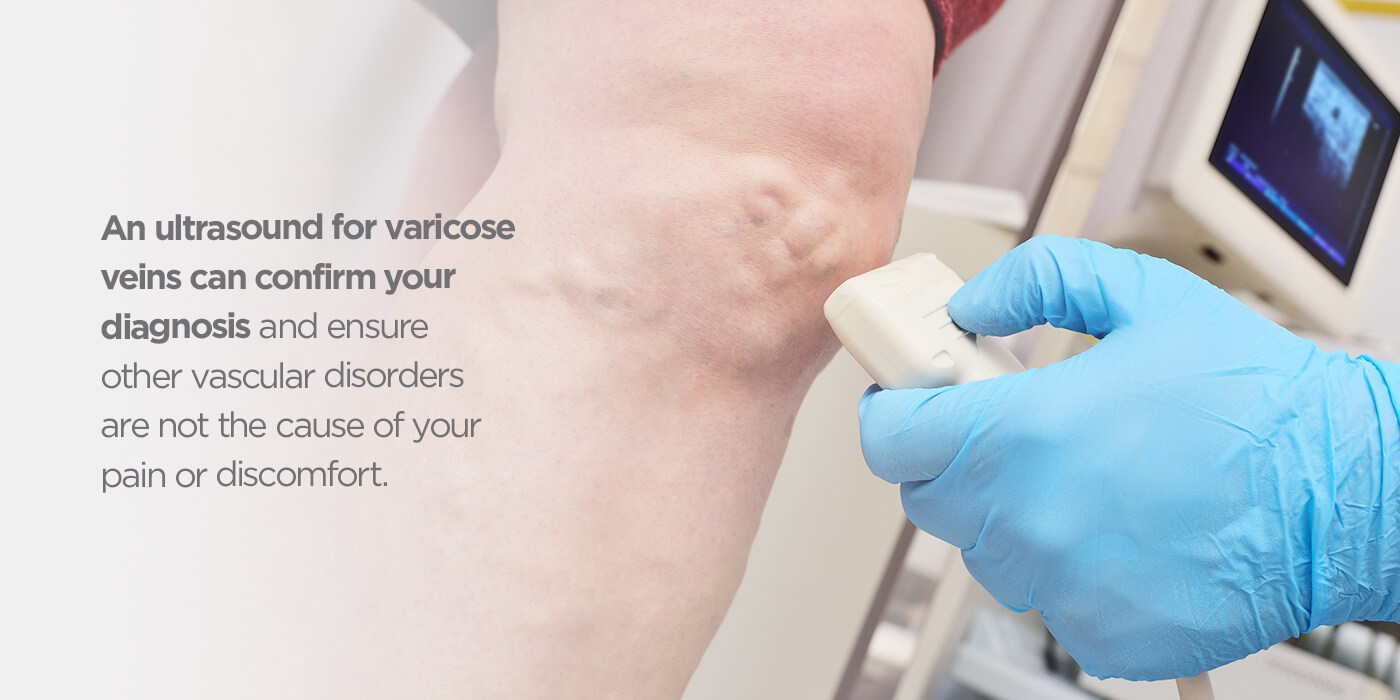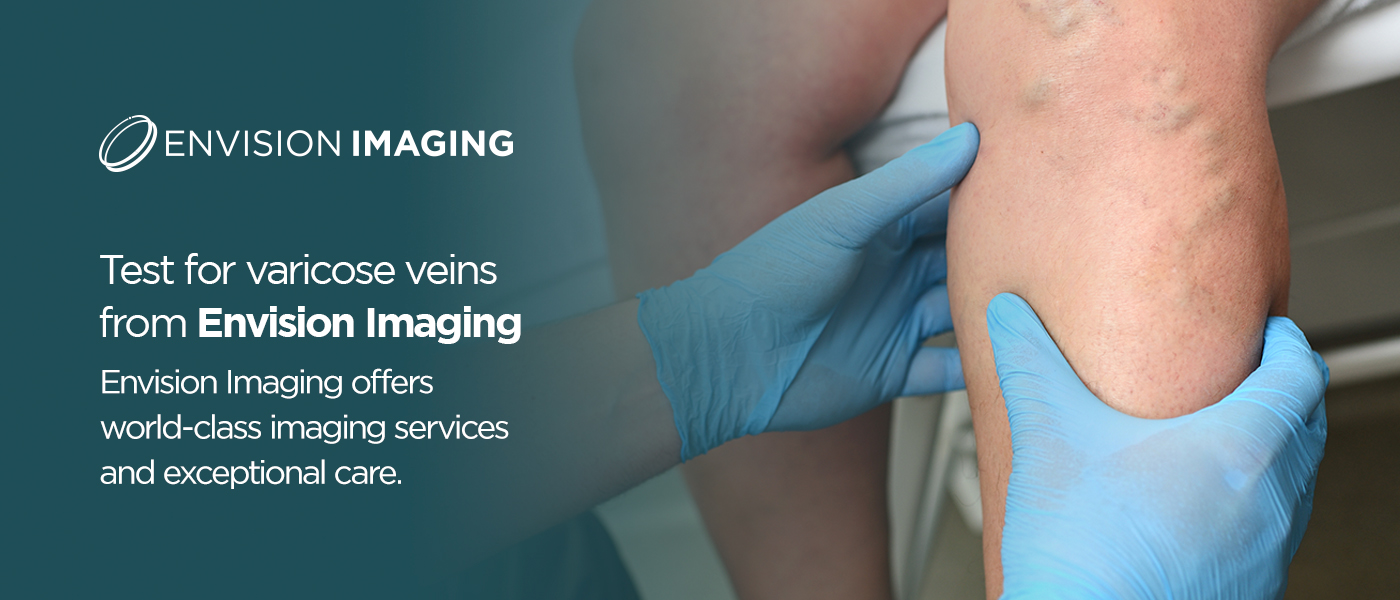Imaging test for varicose veins
Twisted or enlarged veins in your legs or feet are likely an indicator of varicose veins. Nearly 25% of adults in the United States experience this condition, with many experiencing discomfort or pain as they navigate daily activities. Varicose veins are a common vascular condition, but you don’t have to live with them forever. Keep reading to learn more about varicose veins and how you can detect and treat them.
Jump to Sections:
- What are varicose veins?
- Can an ultrasound detect varicose veins?
- What to expect during a varicose vein ultrasound
- Test for varicose veins from Envision Radiology
What are varicose veins?
Varicose veins are enlarged, twisted veins. Veins close to the surface of the skin can become varicose, meaning this condition can happen anywhere in your body. This condition is common for leg veins due to the pressure in the lower body from walking and standing. A mild variation of varicose veins, spider veins, can be an aesthetic issue for many people. However, others experience discomfort and pain from the condition. Severe cases can lead to serious problems, and treatment varies by patient, sometimes needing self-care or healthcare procedures.
Symptoms of varicose veins include:
- Purple or blue veins
- Bulging or twisted veins that resemble a cord
- Heavy or aching feelings in the legs
- Muscle cramping, throbbing, swelling or burning in the lower legs
- Increased pain after standing or sitting for an extended period
- Skin color changes in places with an apparent vein
- Itching near one or multiple veins
What causes varicose veins?
Damaged or weakened valves can result in varicose veins. Although all veins in your body carry blood from different areas to your heart, those in your legs work even harder because they work against gravity. The valves in your veins prevent blood from flowing backward, and if they have signs of damage or become weak, blood can pool in the veins, leading veins to twist or stretch.
Other factors that can cause varicose veins include:
- Obesity: Obese patients put additional stress on their veins, increasing the likelihood that they twist or stretch.
- Sex: Women are more likely to experience varicose veins, and hormonal changes during pregnancy, before a menstrual period and during menopause might cause veins to relax. Some hormonal medications, like birth control, may also increase your risk of this condition.
- Age: As you get older, you increase the natural wear and tear of your veins, which can cause the valves to weaken and allow blood to pool and collect in the veins.
- Family history: Like many medical conditions, if you have a family member who experiences varicose veins, you are more likely to experience it as well.
- Pregnancy: Blood volume increases throughout pregnancy to support the growing baby. This experience can lead to enlarged veins throughout the body.
- Sitting or standing for long periods: Movement helps regulate blood flow, so remaining still for prolonged times can cause irregularities that can result in varicose veins.
Complications of varicose veins
Diagnosing and treating varicose veins is essential for getting back to your regular routine. For some people, such as pregnant women, varicose veins may go away on their own within a few weeks after giving birth. However, people who experience this condition due to other factors may need additional treatment. Complications from varicose veins include:
- Skin discoloration
- Ulcers
- Bleeding
- Blood clots
- Superficial thrombophlebitis
- Pulmonary embolism
- Deep vein thrombosis
Treatment methods vary by patient, and receiving a customized plan will help you get back on your feet as soon as possible. Self-care, like compression stockings, exercise and raising your legs when sitting or standing can help some patients. Other patients may need more extensive treatment, like surgeries or cosmetic procedures, to reduce vein appearance and allow the veins to fade. Laser treatment, vein stripping, sclerotherapy and ambulatory phlebectomy procedures can help patients reduce pain and cause varicose veins to fade.
Can an ultrasound detect varicose veins?
Ultrasound imaging is a technique that creates body images with high-frequency sound waves rather than radiation. The lack of radiation makes this exam safer for pregnant women and children. Ultrasound images show the structure and movement of your organs with real-time photos. This exam can also monitor blood flowing through your veins, making them helpful for diagnosing varicose veins.
An ultrasound for varicose veins can confirm your diagnosis and ensure other vascular disorders are not the cause of your pain or discomfort. A Doppler ultrasound is a noninvasive exam that can detect blood clots and evaluate your blood flow. This test measures the rate of blood flow pitch changes, allowing it to estimate how fast your blood flows.
A duplex ultrasound is a combination of traditional ultrasound techniques and Doppler techniques. This exam provides a moving, two-dimensional image of your blood vessels. Your provider can also use this exam to detect vein thrombosis, a severe condition you can treat with blood thinners.
What to expect during a varicose vein ultrasound
Ultrasounds are noninvasive exams that require little preparation. If you have a latex allergy, alert your provider to ensure they do not use a latex transducer. Typically, your only preparation before the procedure will be to wear comfortable, loose clothing. Most of these exams last for a short period, typically between 30 and 60 minutes.
An external ultrasound for varicose veins involves moving a transducer over your skin. Your provider will use lubricating gel to allow the transducer to slide around to gather images seamlessly. This does not cause any pain, although the increased pressure can cause discomfort for some patients.
Test for varicose veins from Envision Radiology
Envision Radiology offers world-class imaging services and exceptional care. The moment you step through our doors, you can expect your quality of life and health to become our top priority. We understand that varicose veins can be painful, and we want to help you get back on your feet. Our cutting-edge services, including ultrasounds, are precise and accurate so you can find the care you need as soon as possible.
Consistency and concision are at the forefront of our mission to deliver quality healthcare. As we continue revolutionizing the radiology industry, we combine exceptional service and unmistakable quality to ensure every patient gets the care they need and expect.
Our providers want to enhance your well-being and health through hospitality and expertise. We ensure each patient has a memorable experience by providing respect, commitment and timely service to everyone. We offer each of our services in a comfortable, elegant space where we can cater to your needs and create a pleasant and accurate experience.
At Envision Radiology, you can expect fast results, the latest imaging technology, world-class radiologists and highly-rated patient satisfaction. You can find our convenient centers in Colorado, Oklahoma, Louisiana and Texas. Contact your local imaging location for more information about our services and how we can help you.






